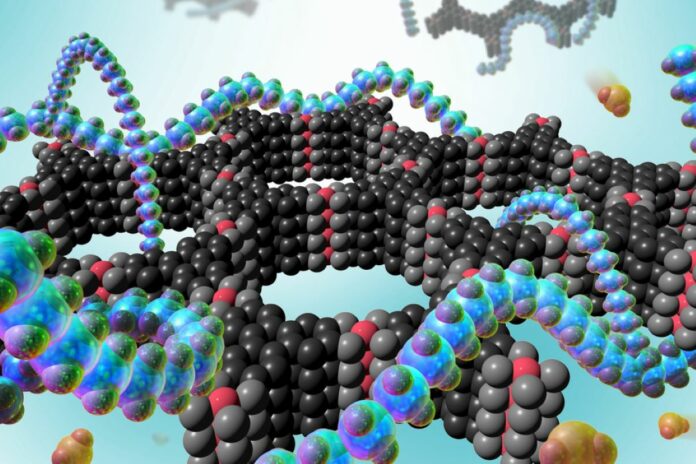
18 May, 2024 by Amit Malewar
Collected at : https://www.techexplorist.com/detector-continuously-monitoring-toxic-gases/84011/
MOFs are large-surface-area, highly porous materials with a range of compositions. The ones employed in this work are extremely electrically conductive, while some can be insulators. They are good at absorbing molecules of different gases because of their sponge-like shape, and their pores may be made to be selective for specific types of gases.
The disadvantage of using these materials as gas detectors is that they easily become saturated, which makes it impossible for them to detect and measure additional inputs. You don’t want that. You need to be able to recognize and recycle.
Now, researchers at MIT have developed a detector that could provide low-cost continuous monitoring of the presence of these gases.
The new system avoids the drawbacks of two already-existing technologies while maintaining their benefits. It pairs an extremely durable polymer material that is easier to process with a substance known as a metal-organic framework, or MOF, which is far less sensitive but rapidly deteriorates in performance when exposed to minute amounts of gas.
To achieve reversibility, scientists used a polymer composite that responds to gases without permanently binding to them. The polymer will at least provide this recognize-and-release behavior, although it does not have the high surface area of the MOFs.

The polymers and powdered MOF material were mixed into a liquid solution. The combination was then applied to a substrate and allowed to dry into a thin, homogenous layer. The polymer’s fast detection speed and the more sensitive MOFs combined in a one-to-one ratio result in a sensor that possesses both the reversibility made possible by the polymer’s presence and the high sensitivity obtained from the MOF.
When gas molecules are momentarily trapped in a material, the material’s electrical resistance changes. An ohmmeter can be attached to trace the resistance over time, allowing for continuous monitoring of these variations in resistance.
In a modest lab-scale system, scientists demonstrated the composite material’s capacity to detect nitrogen dioxide, a harmful gas produced by many forms of burning. The material’s long-term use potential was demonstrated by the fact that, after 100 cycles of detection, it was still performing within a margin of roughly 5 to 10 percent.
The team also finds that this material has a considerably higher sensitivity than most nitrogen dioxide detectors currently in use. This gas is frequently found following stove oven use. Furthermore, accurate low-concentration detection is crucial because this gas has lately been connected to numerous asthma cases in the United States. The group showed that the novel composite could detect the gas reversibly at concentrations as low as 2 parts per million.
MIT professor Aristide Gumyusenge said, “While their demonstration was specifically aimed at nitrogen dioxide, we can definitely tailor the chemistry to target other volatile molecules, as long as they are small polar analytes, which tend to be most of the toxic gases.”
One benefit of the material, in contrast to ordinary MOFs, which are often in an ineffective powder state, is that the polymer allows it to be deposited as an incredibly thin uniform film, in addition to being compatible with basic hand-held detectors or smoke alarm types of devices.
The processing techniques may be similar to those used in industrial coating operations; due to the films’ extreme thinness, minimal material may be required for manufacture, potentially resulting in inexpensive material costs. Therefore, increasing the synthesis of the polymers—which we’ve been synthesizing in little amounts—might be the limiting issue.
Gumyusenge said, “The next steps will be to evaluate these in real-life settings. For example, the material could be applied as a coating on chimneys or exhaust pipes to continuously monitor gases through readings from an attached resistance monitoring device. In such settings, we need tests to check if we truly differentiate it from other potential contaminants that we might have overlooked in the lab setting. Let’s put the sensors out in real-world scenarios and see how they do.”
Journal Reference:
- Roh, H., Kim, H., Cho, Y., Jo, M., Kulik, H. J., Dincă, M., & Gumyusenge, A. Robust Chemiresistive Behavior in Conductive Polymer/MOF Composites. Advanced Materials, 2312382. DOI: 10.1002/adma.202312382

Leave a Reply